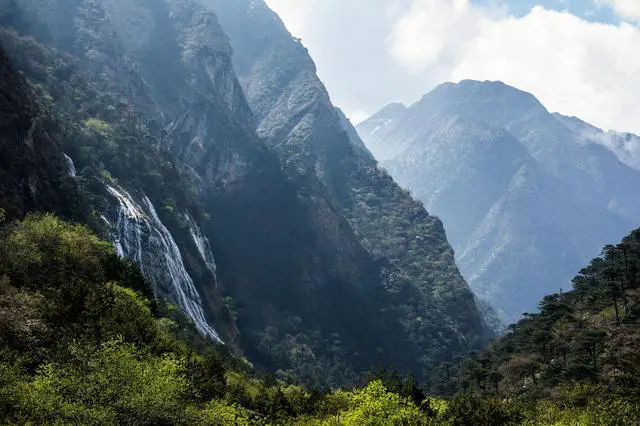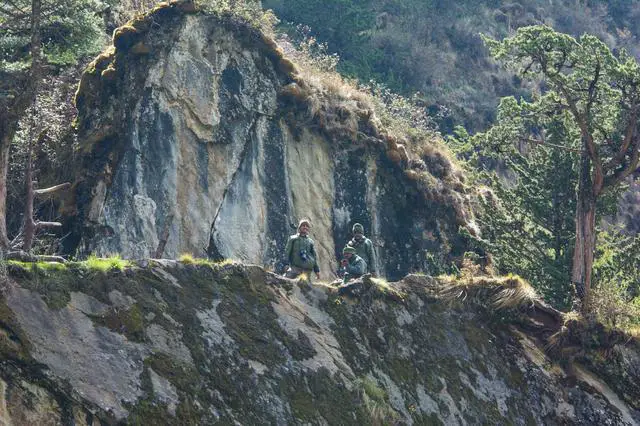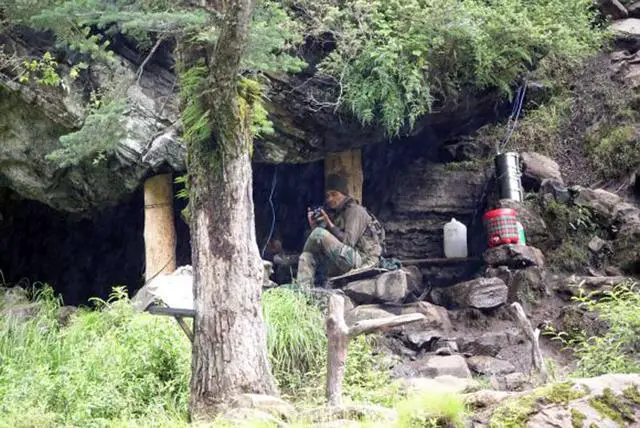Chinese media articles claim that the Chinese People Liberation Army (PLA) has reclaimed the Dongzhang Waterfall from the Indian Army after 20 years. Dongzhang Waterfall is the Chinese name for the Chumi Gyatse waterfall.
The Chumi Gyatse waterfall is revered and holy for the Monpas, the Tibetan Buddhists.
As a caution, some names of the places might be misspelt in the text below as they are a translation of Chinese or might be the Chinese names for the places.
From the Chinese Point of view
The Dongzhang area is located on the southern slope of the Himalayas, and the warm and humid air from the Indian Ocean is blocked on the south slope, forming topographic rain. The south slope of the Himalayas has abundant precipitation, which is conducive to vegetation growth. Cona County, which is more than 40 kilometres away from the north of Dongzhang, is nearly 4400 meters above sea level, but it is an alpine land with almost no tall trees. Cona County lies in Shannan prefecture in the southern part of Tibet Autonomous Region. It is located in the immediate north of the disputed India-Tibet border demarcated by the Line of Actual Control.
From Dongzhang along the Cuona River (also known as Langbo River, Dongzhang River) south, into the Tawang Chu River, the altitude gets lower. After Tawang and Dejanzong, Dongzhang is less than 100 kilometres away from the plains of the Indian subcontinent (Assam Plain).
In 1962, when the PLA rushed to the foot of the mountain near Dejangzong, an endless plain appeared in front of them. The soldiers who rushed in front saw no mountains in front of them and thought they had attacked India. This is also the reason why the Indian Army insists on holding the Dongzhang area and is unwilling to retreat.

As per the Chinese, in the 1990s, the Indian Army, near the line of actual control on the Sino-Indian border, successively pushed forward the policy of advancing, constantly encroaching on Chinese territory, and the two sides began to confront each other. The Indian Army in the Dongzhang area first invaded the Dogoer Ranch, then occupied the Dongzhang Waterfall, and began a confrontation with the PLA. At first, both sides maintained an attitude of restraint, especially the Chinese side tried to keep the situation stable. Finally, through negotiation, the two sides retreated.
In 2001, the Indian Army implemented the forward policy again, occupied Dongzhang Waterfall, set up checkpoints at Dongzhang Waterfall, stationed more than ten troops, and destroyed the wooden bridge leading to Dongzhang Waterfall on the Cuona River. There is no bridge on the river, so Chinese border residents could not go to the waterfall to fetch water. At this time, the Indian Army advanced more than 1 km from the original station, forming a protruding part at Dongzhang Waterfall, threatening the safety of Dongzhang River Valley. After countermeasures, PLA back Dongzhang Waterfall. Later, due to logistical support and other reasons, Dongzhang Waterfall was occupied by the Indian Army. This area was taken and retaken multiple times.
Until 2009 at Dongzhang Waterfall, Chinese border residents could detour from under the waterfall to the Dogoer pasture for grazing. After the Indian Army completely occupied Dongzhang Waterfall, the border residents could not go to the Dogoer or Goer pasture for grazing. Dogoer pasture was occupied by the Indian Army, covering an area of more than 30 square kilometres.
At that time, the reason for not fully recovering the grassland was the stabilization of the situation and the high mountains, valleys, and rough roads, which made logistical support very difficult. There was no road from Cuona County to Dongzhang Waterfall, and people completely carried the material supply on their shoulders through the primitive jungle. It took a day to walk to Dongzhang Waterfall. Of course, it was difficult for the PLA and even more difficult for the Indian Army.

In 2019, PLA built the Dongzhang River and then the road to the top of Dogoer Mountain. The logistical support has been greatly improved. There are still dirt roads on the side of the Indian-controlled area, and sometimes have to rely on helicopters for supplies. The border defense situation has been completely favourable to the Chinese.
Recently, the Indian media spread rumours that PLA soldiers were “detained” by the Indian Army for several hours for “crossing the border” when they were patrolling in the Dongzhang area and then released. PLA’s Western Theater District refuted the rumours that the Indian media’s hype about the detention of Chinese soldiers for “crossing the line” was false and did not match the facts. PLA border guards conducted routine patrols in the Dongzhang area on the Chinese side of the China-India border as planned but encountered unreasonable obstruction from the Indian side on the way. The Chinese officers and soldiers resolutely responded and returned after completing the patrol mission.

As per the Chinese, the Indian Army has been beaten again. A small patrol team went deep into the valley pasture following the patrol route 20 years ago and arrived near the actual control line. It entered the rear of the Indian army checkpoint to dismantle illegally constructed buildings and fortifications. When the Indian Army reacted, it was shocked and quickly mobilized nearby troops to encircle the patrol team. The Indian Army did not expect to be surrounded by a large PLA patrol. As a result, the Indian Army made up their minds based on the incident at Pangong Lake last year.
When the Indian Army deployed troops to encircle the PLA team, several Indian army posts on the ridgeline were unmanned due to the deployment of personnel. They were destroyed, restoring PLA’s regular patrol route 20 years ago. Whether that will be the case, we will wait and see.
As per the Chinese media, PLA has to now head south for 100 kilometres, towards Assam plains, to reach the traditional borderline of the Chinese territory. It is a long way to go to recover the territory.
